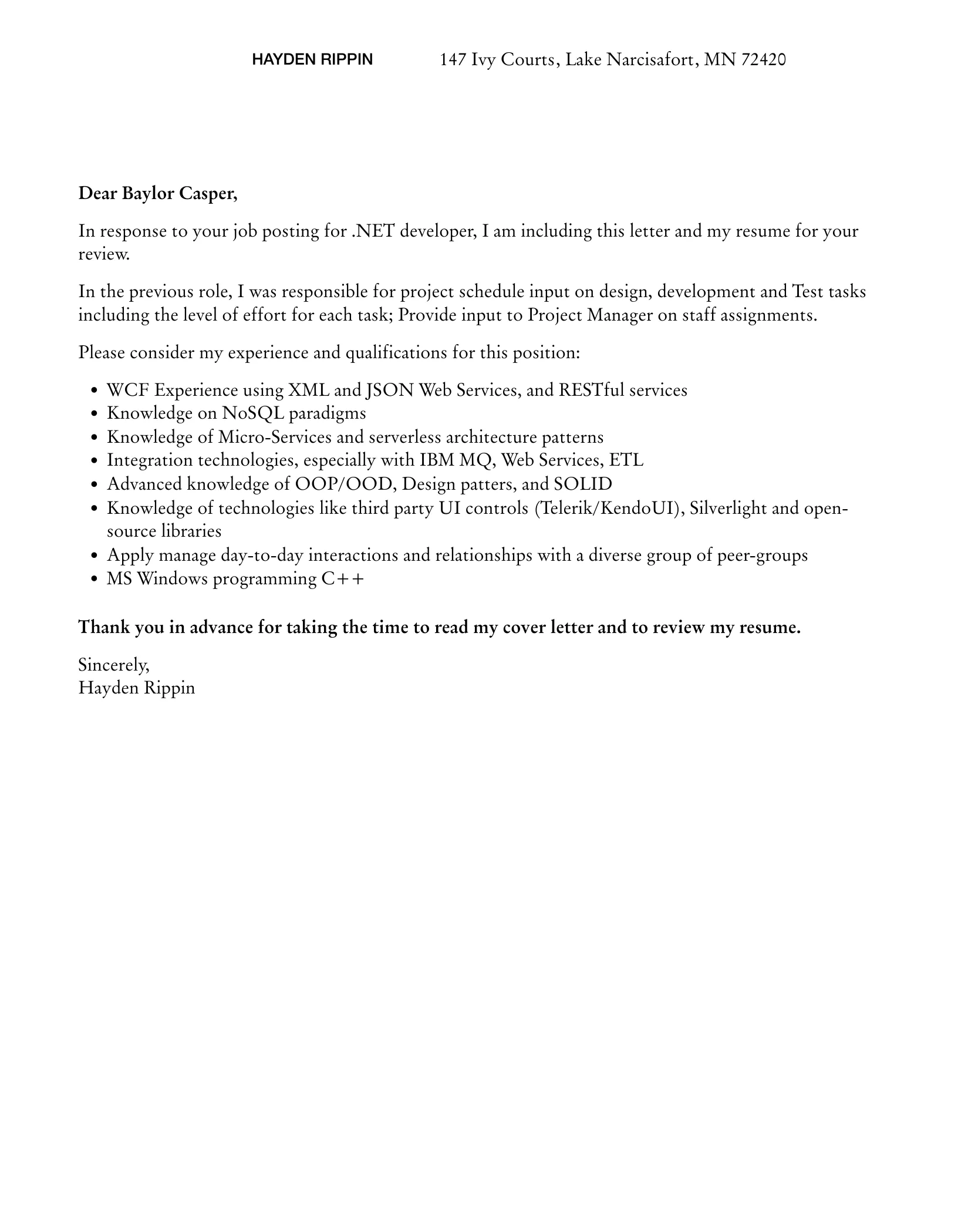Understanding the Importance of a .NET Developer Cover Letter
In the competitive world of software development, particularly within the .NET ecosystem, a well-crafted cover letter is often the key to unlocking your dream job. It serves as your first introduction to a potential employer, giving you a crucial opportunity to make a strong and lasting impression. A cover letter isn’t merely a formality; it’s a vital tool that can significantly boost your chances of landing an interview. It complements your resume by providing context, showcasing your personality, and demonstrating your genuine interest in the specific role and the company itself. Neglecting this important step could mean missing out on opportunities that perfectly match your skills and career aspirations.
Why a Cover Letter Matters
Your resume provides a snapshot of your professional history and technical abilities, while your cover letter allows you to delve deeper. It’s a chance to tell a compelling story about why you’re the ideal candidate. It allows you to highlight specific projects, skills, and experiences that directly align with the job requirements, emphasizing your value proposition. A cover letter can also reveal your communication skills, writing style, and attention to detail – all crucial attributes for a .NET developer. Furthermore, a well-written cover letter shows that you’ve taken the time to understand the role and the company, signifying your genuine interest and proactive approach. In essence, it separates you from the crowd of applicants who rely solely on their resumes.
Highlighting Your .NET Skills and Experience
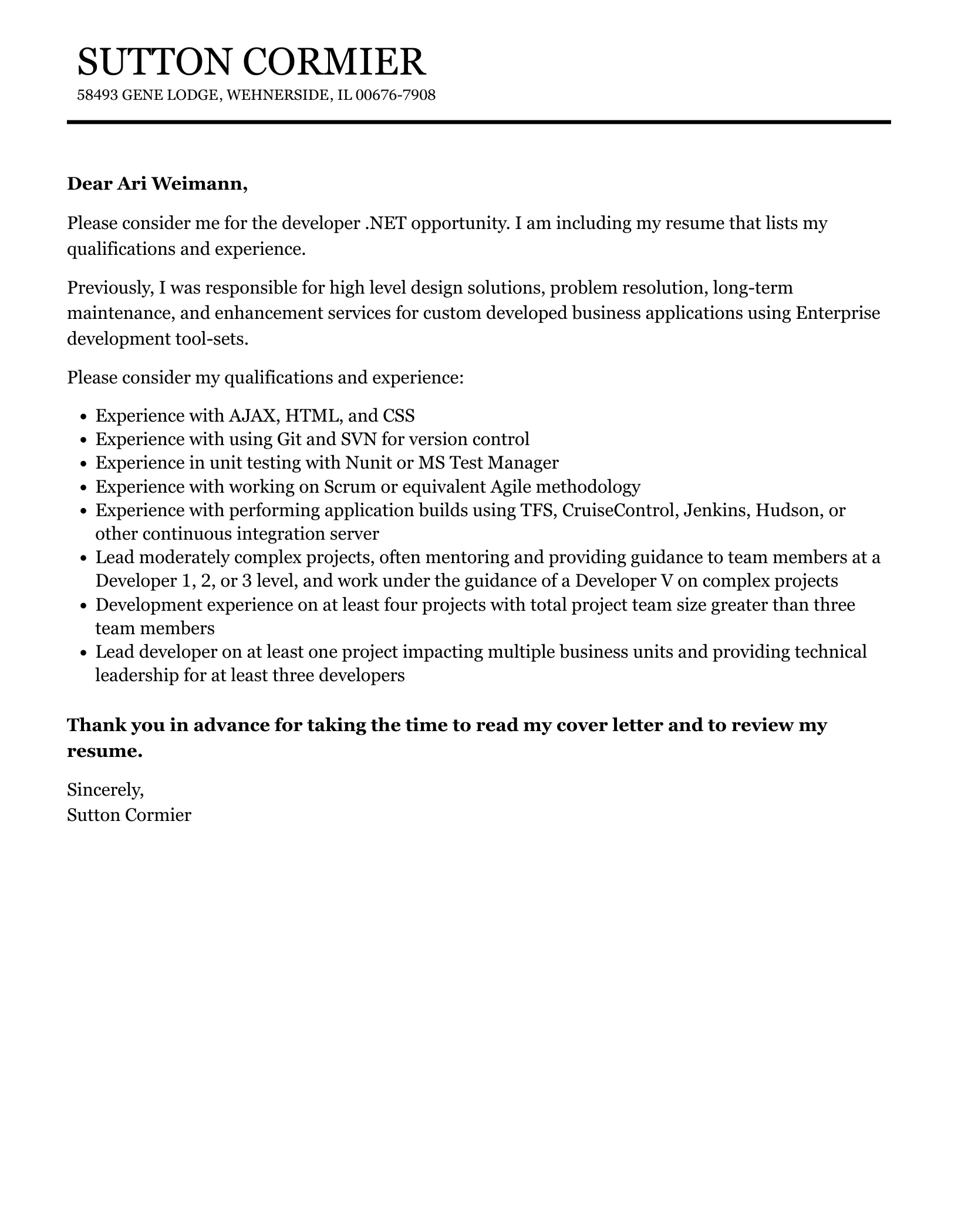
The core of your cover letter should focus on your .NET skills and how they align with the job requirements. Don’t just list your skills; illustrate them with concrete examples from your past projects and experiences. Discuss how you’ve utilized C#, ASP.NET, .NET Core, or other relevant technologies to solve specific problems or achieve particular results. Whenever possible, use the job description as a guide, mirroring the keywords and skills mentioned. This targeted approach demonstrates that you understand what the employer is looking for and can deliver on their needs. Remember to be specific; instead of saying you’re proficient in a technology, provide examples of how you’ve used it to build or maintain applications.
Key Skills to Showcase
When highlighting your skills, focus on those most relevant to the position. Common skills to include are proficiency in C#, experience with the .NET framework and .NET Core, knowledge of ASP.NET and MVC/Web API, database management (SQL Server, etc.), experience with front-end technologies (JavaScript, HTML, CSS), and experience with cloud platforms (Azure, AWS). If the job requires specific tools or technologies, such as Entity Framework, LINQ, or specific design patterns, make sure to mention your experience with them. Moreover, emphasize your problem-solving abilities, your understanding of software development principles, and your experience with version control systems like Git. Tailor your skills list to match the job description as closely as possible, ensuring you address the key requirements directly.
Quantifying Achievements
Whenever possible, quantify your achievements. Instead of saying you ‘improved application performance’, state that you ‘improved application performance by 30% by optimizing database queries’. Quantifying your accomplishments provides concrete evidence of your impact and value. Use numbers, percentages, and specific metrics to showcase your contributions. For example, if you reduced bug reports, mention the percentage reduction. If you streamlined a process, specify the time saved. This approach not only highlights your skills but also demonstrates your ability to deliver tangible results, making your cover letter more impactful and memorable.
Tailoring Your Cover Letter
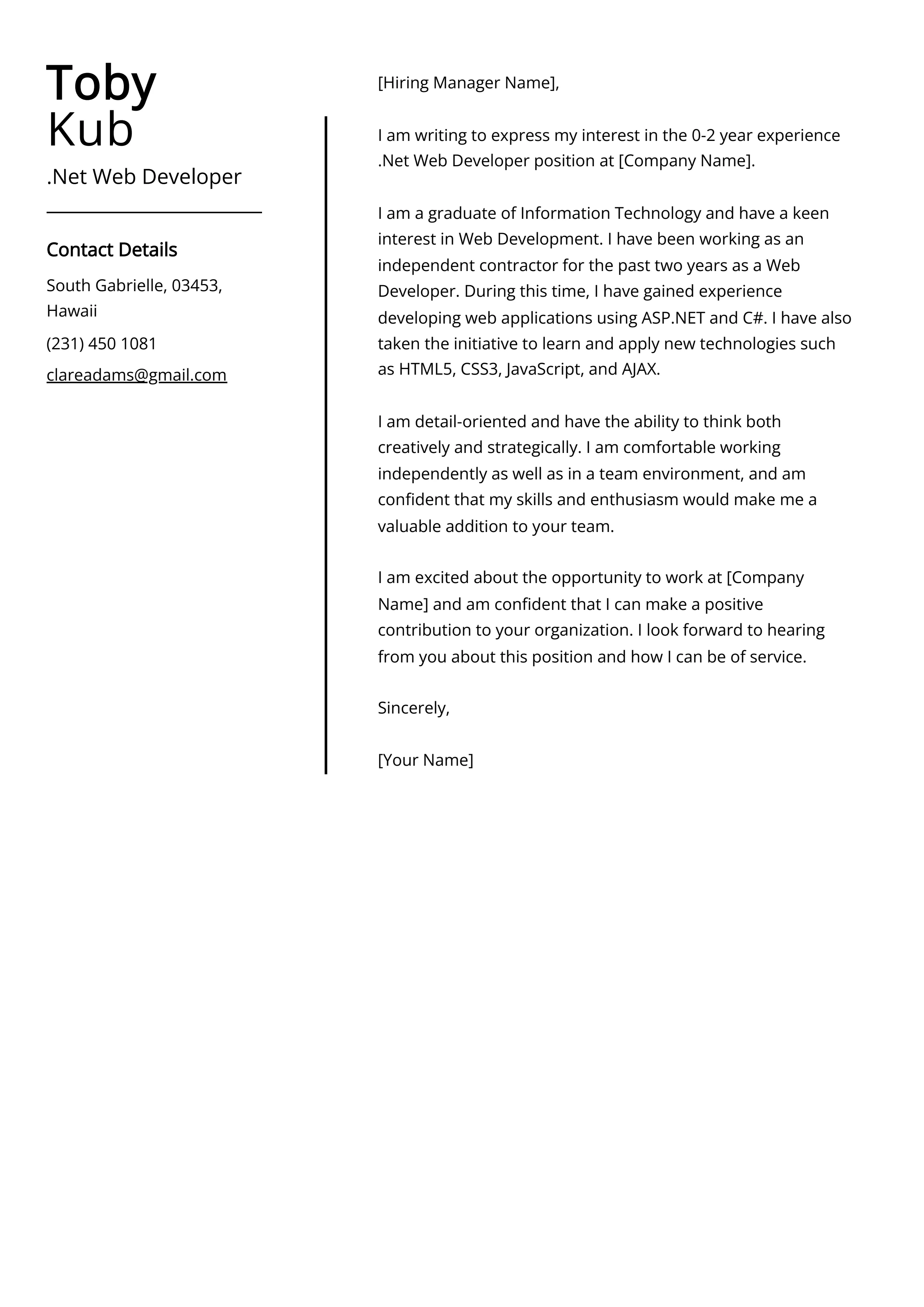
Generic cover letters are easily identified and often discarded. Customize each cover letter to the specific job and company you’re applying to. This shows that you’ve taken the time to understand the role and the organization. Begin by carefully reviewing the job description and identifying the key skills, experience, and qualifications the employer is seeking. Then, adjust your cover letter to highlight the relevant aspects of your background. Mention the company by name, and if possible, reference specific projects, products, or values that resonate with you. Tailoring your cover letter demonstrates your genuine interest and increases your chances of making a positive impression.
Researching the Company
Before you begin writing your cover letter, research the company. Visit their website, read their ‘About Us’ section, and explore their social media presence. Understand their mission, values, and recent projects. This research will help you tailor your cover letter to their specific needs and culture. You can mention a specific product or project that interests you, demonstrating that you’ve done your homework. Furthermore, knowing the company’s values allows you to align your skills and experience with their culture, which can significantly improve your chances of standing out.
Addressing the Specific Job Requirements
Carefully review the job description and identify the key requirements. Use your cover letter to address these requirements directly. For each requirement, provide a brief example of how your skills and experience align. This can be achieved by using the keywords from the job description and incorporating them naturally into your sentences. Doing this makes it clear to the hiring manager that you understand what the role entails and that you possess the necessary skills. By addressing the specific job requirements, you ensure that your cover letter is relevant and persuasive.
Structuring Your .NET Developer Cover Letter
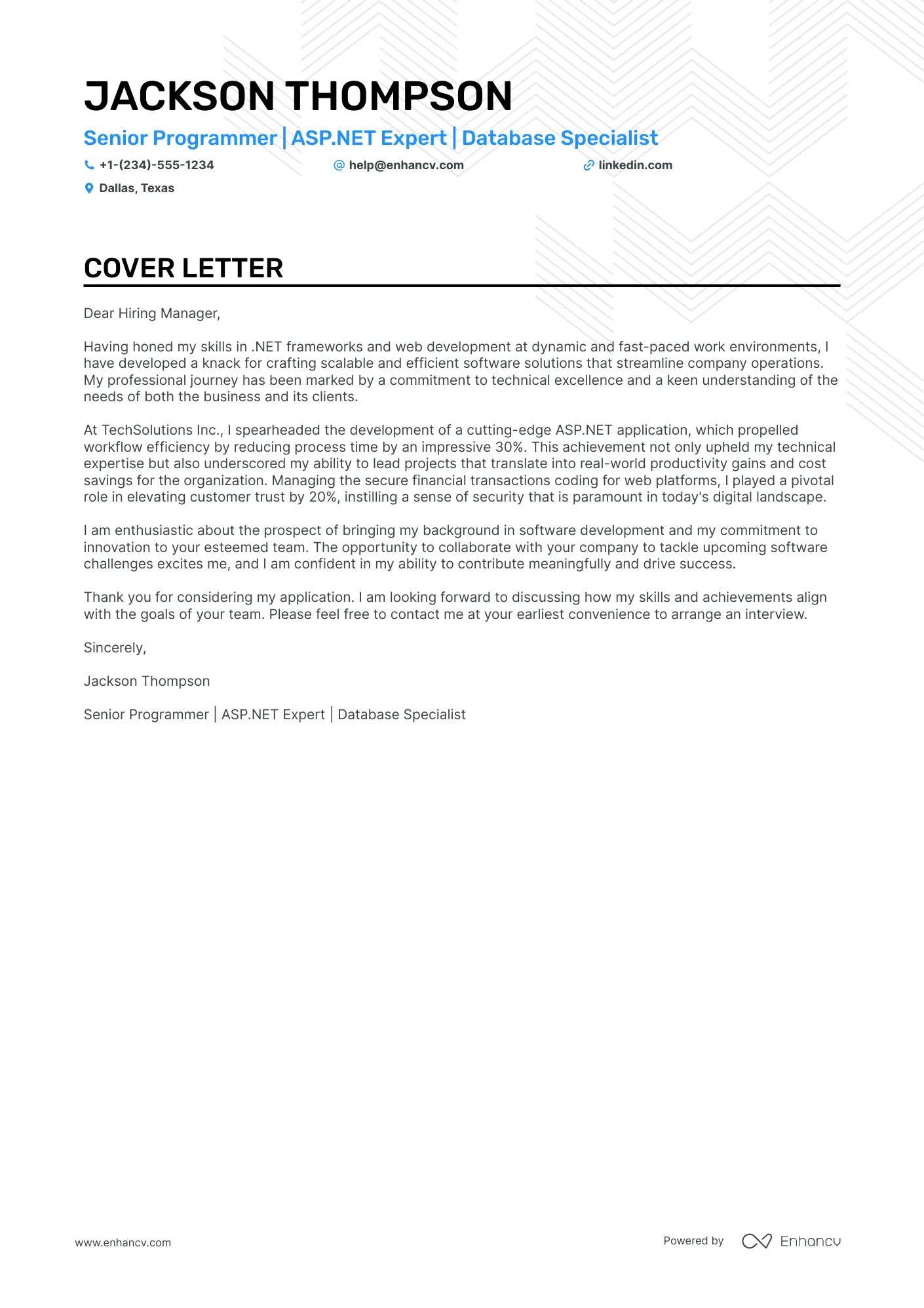
A well-structured cover letter is easy to read and conveys information effectively. Use a clear and concise format with distinct sections to organize your thoughts. A standard cover letter structure typically includes a header with your contact information, a professional greeting, an introductory paragraph, several body paragraphs showcasing your skills and experience, a closing paragraph, and a formal closing. Each section should have a specific purpose, and the flow of information should be logical. This structure ensures that your key messages are communicated clearly and that the hiring manager can easily understand your qualifications.
The Header Your Contact Information
At the top of your cover letter, include your contact information. This should include your full name, phone number, email address, and optionally, your LinkedIn profile URL or a link to your online portfolio or GitHub profile. Ensure your contact information is accurate and professional. Use a professional email address (e.g., firstname.lastname@email.com) and double-check that your phone number is correct. The header provides the recruiter with immediate access to your contact information, making it easy for them to reach out to you if they are interested in your application.
The Opening Grab Attention
Your opening paragraph is your chance to grab the reader’s attention. Avoid generic openings; instead, make a strong statement that highlights your interest in the role and the company. You might mention how you learned about the position and why you’re excited about the opportunity. Briefly state your key skills and how they align with the job requirements. Consider including a brief anecdote that showcases your passion for .NET development or a significant achievement that demonstrates your skills. The goal is to immediately capture the hiring manager’s attention and make them want to read more.
Body Paragraphs Showcasing Skills and Experience
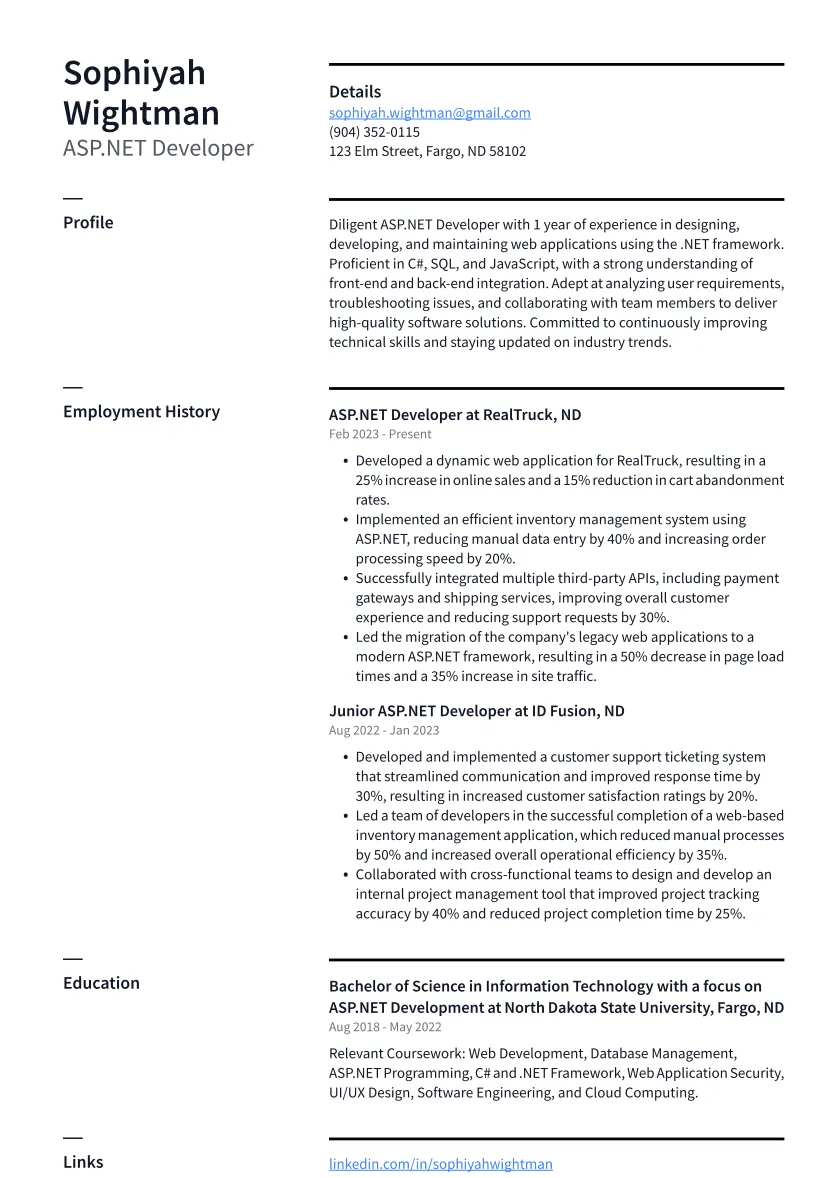
The body paragraphs are where you provide details about your skills, experience, and accomplishments. Use these paragraphs to elaborate on the points you introduced in your opening. Provide specific examples of your .NET development skills, such as your experience with specific frameworks, technologies, and tools. Explain how you’ve used these skills in previous projects, emphasizing your accomplishments and the results you achieved. This is the perfect space to incorporate your skills and experience and show the recruiter that you have experience and that your skills are relevant to the role.
Closing Strong and Call to Action
In your closing paragraph, reiterate your interest in the position and express your enthusiasm for the opportunity. Summarize why you are the best candidate. Include a clear call to action, such as requesting an interview or expressing your availability for a call. Thank the hiring manager for their time and consideration. Use a professional closing, such as ‘Sincerely’ or ‘Best regards,’ followed by your full name. Your closing paragraph should leave a positive and lasting impression and encourage the hiring manager to move forward with your application.
Proofreading and Editing
Before submitting your cover letter, meticulously proofread and edit it. Errors in grammar, spelling, and punctuation can create a negative impression and undermine your credibility. Read your cover letter aloud to catch any awkward phrasing or typos. Ask a friend or colleague to review your letter for clarity and accuracy. Pay close attention to formatting, ensuring that your cover letter is well-organized, easy to read, and visually appealing. A polished and error-free cover letter demonstrates your professionalism and attention to detail.
Common Mistakes to Avoid
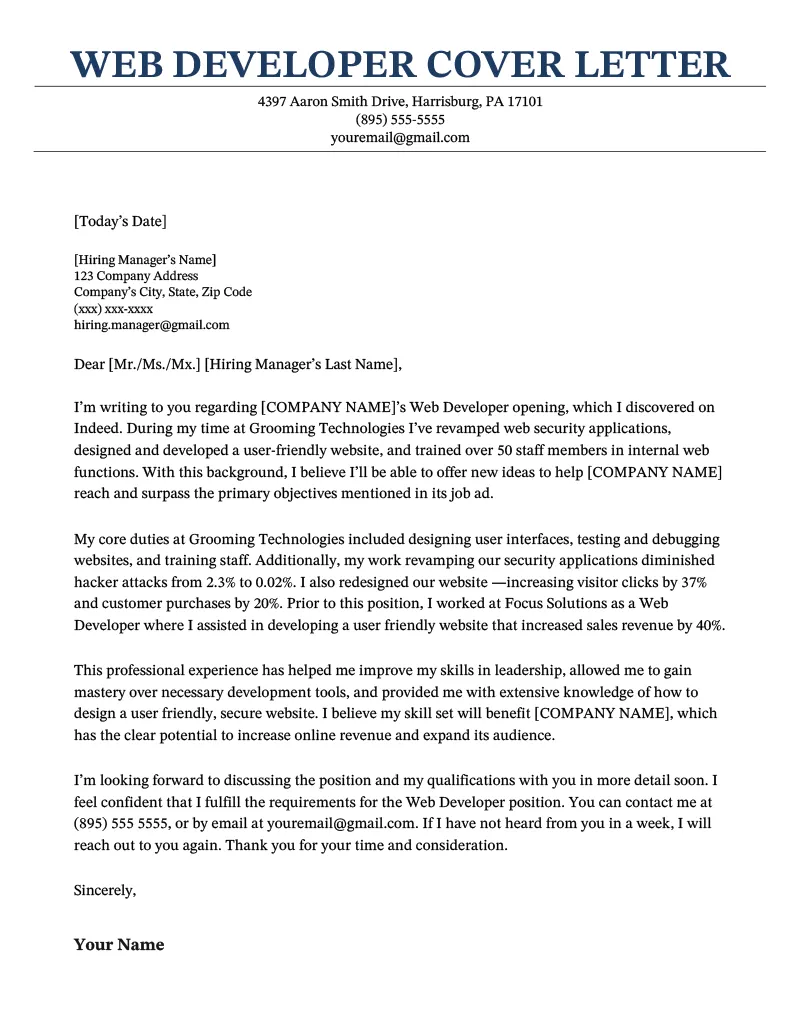
Avoid common mistakes that can hurt your chances of getting hired. These mistakes can range from formatting errors to not including specific information. By avoiding these mistakes, you ensure your cover letter puts your best foot forward.
Overusing Buzzwords
While it’s tempting to include buzzwords, overusing them can make your cover letter sound generic. Instead of using vague terms like ‘synergy’ or ‘innovative,’ focus on concrete examples of your skills and experience. Specific achievements and quantifiable results are much more impressive than a laundry list of buzzwords. Strive for clarity and precision in your language. A well-written cover letter should focus on your accomplishments and skills, not just a collection of overused phrases. This makes it far more impactful to recruiters.
Generic Content
Avoid sending generic cover letters that could apply to any job. Tailor each letter to the specific role and company. Generic content shows a lack of effort and interest, which can quickly lead to rejection. Customizing your cover letter demonstrates that you understand the job requirements and are genuinely interested in the opportunity. Research the company, highlight relevant skills, and address the specific needs outlined in the job description. This targeted approach increases your chances of making a positive impression and standing out from other applicants. Customization makes it clear you are an ideal candidate.
Not Tailoring the Letter
One of the biggest mistakes is not tailoring your cover letter. A cover letter is your chance to show you are a good fit for the role. If you don’t tailor the letter, you won’t make the best impression. Customize each cover letter to the specific job and company you are applying for. This shows the recruiter that you are putting in the work to fit the role. You must show you understand the job description and the company’s culture. By researching the company and the job, you can ensure you have a cover letter that will impress.
Cover Letter Examples and Templates
Using cover letter examples and templates can be a helpful starting point, especially if you’re unsure how to structure your letter. However, remember to adapt these resources to your specific needs. There are several online resources, including career websites and professional writing services, that offer various cover letter templates. Make sure to find a template that suits your experience level and the type of job you’re applying for.
Where to Find Templates
You can find cover letter templates on many websites, including popular job boards, career advice sites, and professional resume services. Look for templates that align with your industry and experience. Some websites offer customizable templates, which can save you time and effort. Always review the templates to make sure they are relevant to the job you are applying for. Use these templates as a guide to write your letter.
Adapting Templates to Your Needs
While templates can be useful, they should not be used without customization. Take the time to adapt the template to your specific situation. Insert your relevant skills and experience, and tailor the content to match the job description and company. Avoid simply filling in the blanks. Customize the content to reflect your personality and your interest in the specific role. This is crucial for creating a cover letter that stands out.
Final Tips for Success
Writing a stellar .NET developer cover letter takes time and effort, but the investment is well worth it. Keep your cover letter focused, concise, and relevant. Proofread meticulously and ensure your letter is free of errors. Customize each letter to the specific job and company. By following these guidelines, you’ll significantly increase your chances of landing an interview and securing your dream job. A well-crafted cover letter can make the difference between getting your foot in the door or getting lost in the crowd.
